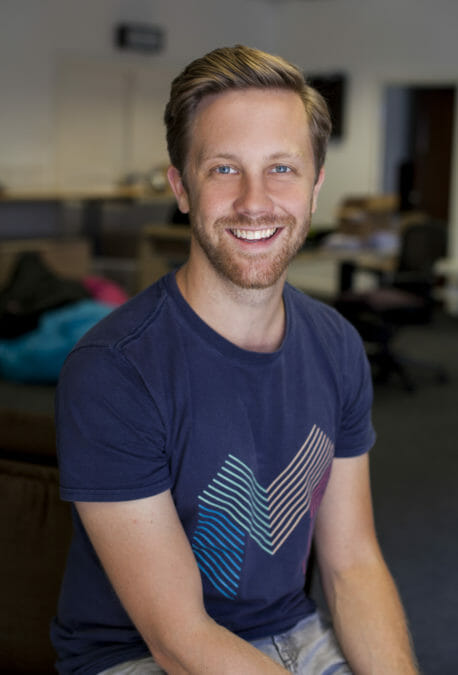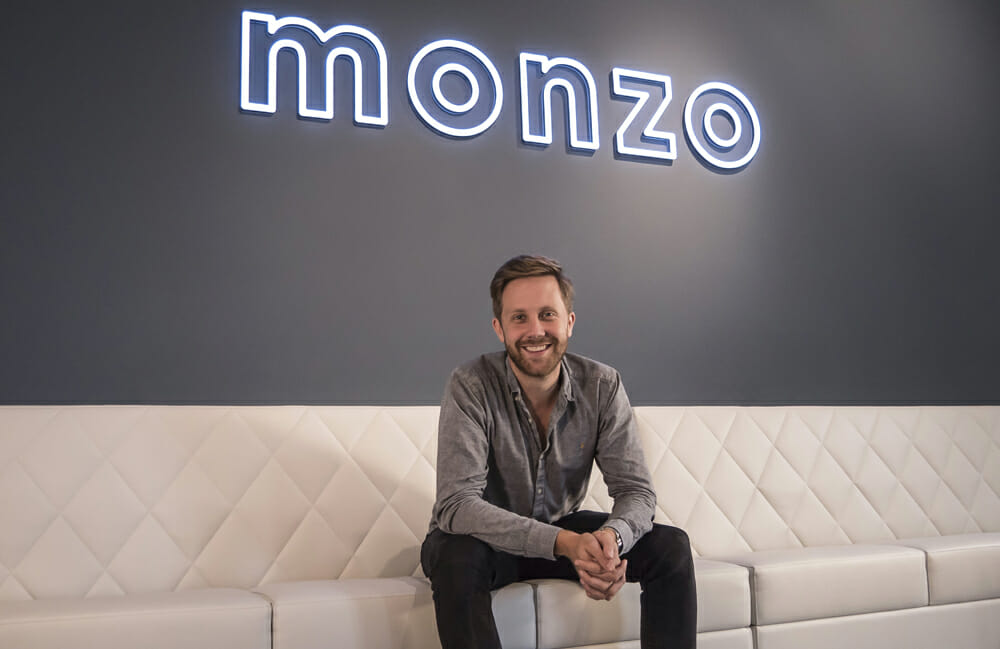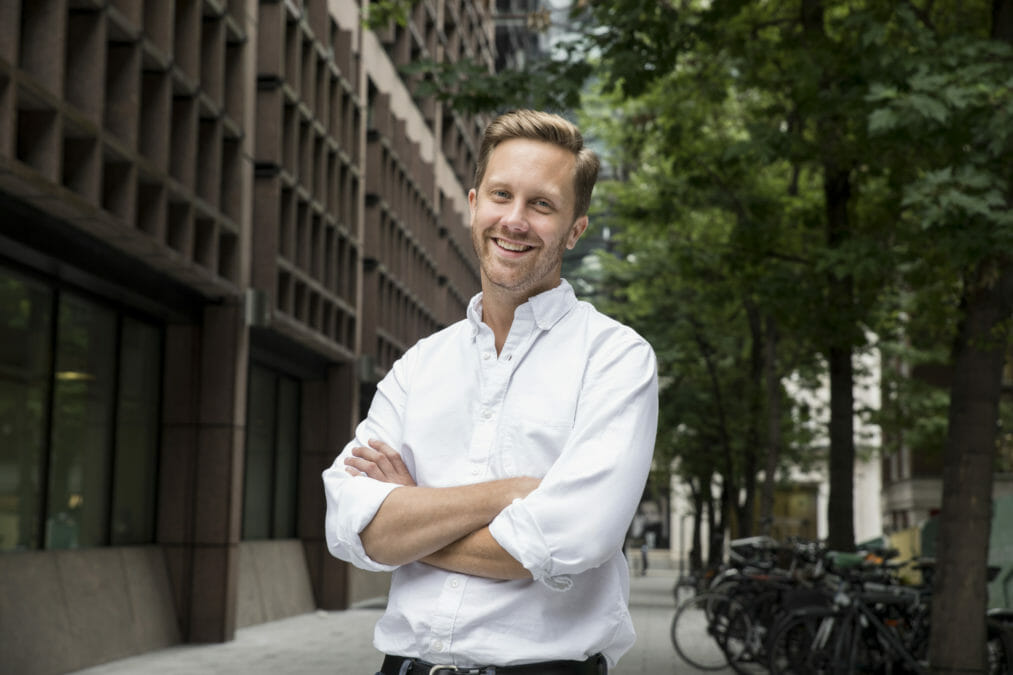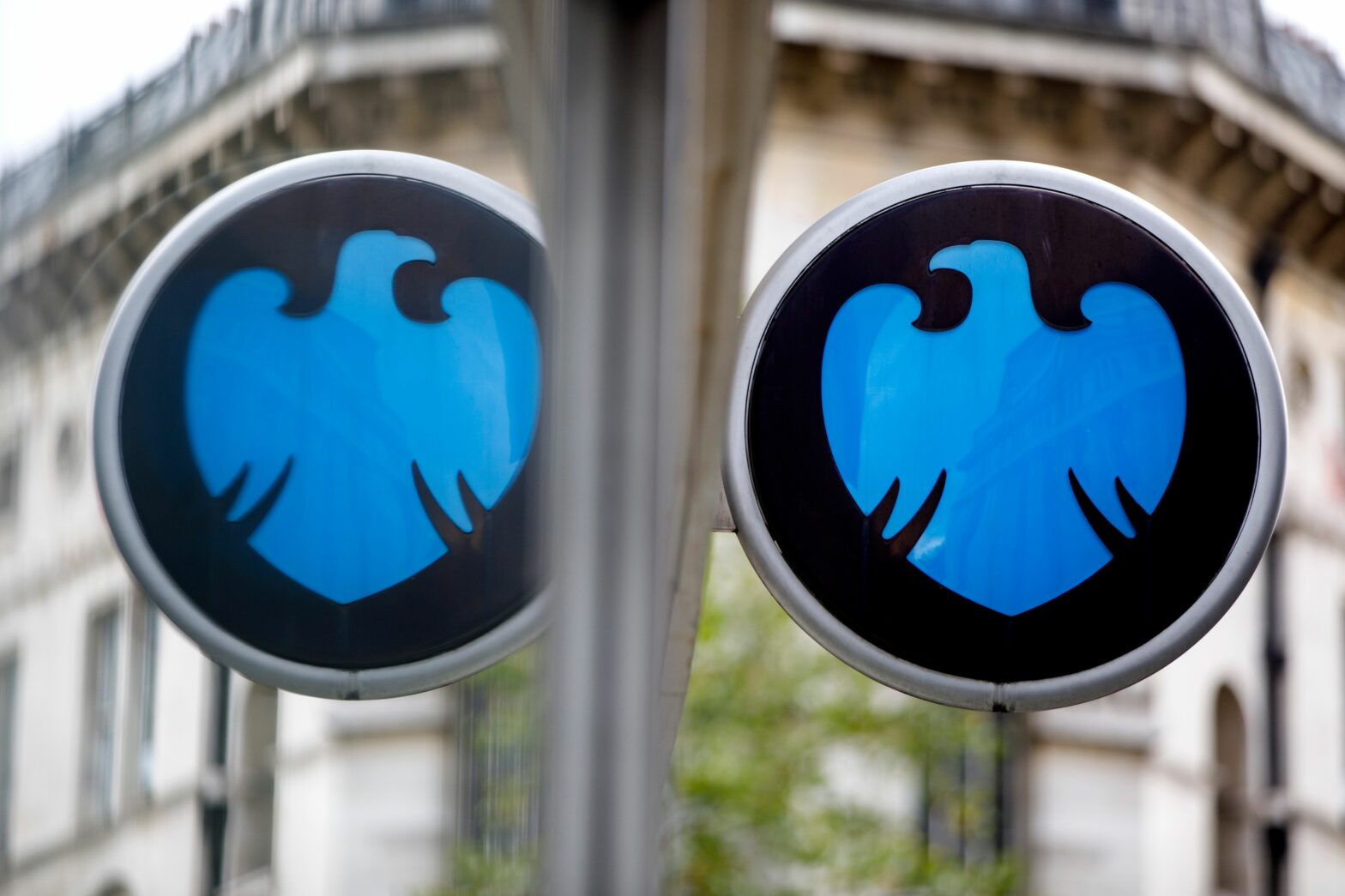Setting up a bank is not the kind of thing many people do. To do it when you are still in your 20s, having never worked for a bank before is, shall we say, particularly unusual. Tom Blomfield, founder and CEO of Monzo Bank, a bank that threatens to disrupt the entire western retail banking scene, says someone even younger than he has founded a bank in Brazil. Even so, to be the second youngest founder of a bank in the world is not bad going.
But then Tom managed to get a place at Oxford studying Law, despite finding school work boring and teaching himself how to program during the long evenings of his youth.
Tom Blomfield says he had a normal upbringing in Buckinghamshire. He played sport, but said he was not especially good at it, and says that he is tone-deaf. “I even got turned down for the school choir,” he laments.
Tom Blomfield
Born: 1986
Education: Dr Challoner’s Grammar School in Amersham, Buckinghamshire, Oxford University
Co-founder at GoCardless, founder Monzo Bank
What the business does? Monzo was founded in February 2015 and became a fully fledged bank in April 2017. Focused on solving problems, treating customers fairly and being totally transparent, its current accounts are currently used by over 2.5 million people, and customers have spent more than £5 billion with its cards so far. A fast-growing team of more than 1000 people work across Monzo’s offices in London, Cardiff, Las Vegas, Los Angeles and remotely around the world.
But there was one thing about the young Tom that was different. His parents would not let him watch TV or play video games until 8pm, so “I had this four-hour block with nothing to do.” Schoolwork bored him. But he discovered that writing HTML, or other code, looked enough like school work that his parents didn’t notice; they thought he was diligently upstairs, laying the foundation stones to a career in the professions. In fact, he was building the founding blocks for this later success as a fintech entrepreneur.
Learning how to program felt like a game, and in this way, he fashioned computer programming expertise.
How many people find school work boring? Many of us find ways to get out of it, some even find the game of balancing a pencil on the side of a desk more fun than homework. And there is a price we pay, good exams results become elusive. By contrast, Tom seemed to have his cake and eat it. He did what he wanted to do in the evenings, without apparently seeing schoolwork suffer. “Exams came naturally to me, I didn’t find them particularly challenging, so every time a new set of exams came around I learnt a new programming language. To my parents it looked as if I was revising.”
UK tech entrepreneurs’ advice
Go back, the young Tom Blomfield
But to find a sign of ‘Tom the entrepreneur’, we have to go back further.
“My father set up his own engineering company when he was in his mid-30s,” when Tom was a young child. Seeing the process, seeing Blomfield senior at work, it seemed to Tom that running a business was going to be his future: he just needed a way to get there.
So as an eight-year-old he had a lemonade tent and played a computer game called ‘Lemonade Stand’ where you ran a lemonade stand, and he was fascinated by it.
In 1997, at school, he tried to build a beginner’s guide to the internet. This was about the time that Yahoo was developing. But that was a big ask for a school kid in Buckinghamshire.
“We ended up running a school disco, instead.” It was part of the Young Enterprise Scheme, ” we registered a company and produced accounts,” he says.
What did he learn from the experience? Was Tom Blomfield, fintech pioneer extraordinaire, moulded by that early flirtation with entrepreneurship.

And was he influenced by the Young Enterprise Scheme?
“If you want to run school discos, it is great,” he said. It would seem that Tom didn’t find the experience especially relevant to setting up a bank. No doubt, neither Marcus Goldman nor Samuel Sachs would have listed running schools discotheques in their youth as a prerequisite to their success, either.
Even so, he says “we registered a company and got accounts.”
He also did business studies for GCSE.
So, maybe that is where the spark was lit.
Maybe, but he tells another story from his youth that gives a much stronger indication of the Fintech genius to follow.
During his business studies course he, along with other members of his class, was handed the grand sum of one pound: seed capital to start a business.
Tom didn’t know what to do. Even with his pockets bursting with no less than 100 pennies, a great idea for a business scheme to change the world eluded him. He paid a visit to the local estate agent and offered to deliver leaflets for them.
It was a cold, wet day: not wishing to rain on his parade, it is worth pointing out that this may not have been the most cutting-edge plan ever envisaged. But this was the late 1990s, back then, a new-fangled concept was gaining popularity among the geekier public, it was called the World Wide Web. Tom put an offer to the estate agent. On day two, not keen to repeat his experience of paving the streets in the rain, he proposed that instead of delivering leaflets he delivered the estate agent’s message by creating something called a website.
“Everyone is going to use the internet” went his pitch. “We negotiated a fee of £250,” he recalls, “and I built the site.”
“It is still around today,” he says. Tom taught himself HTML on the side. “I didn’t want to deliver leaflets, so I taught myself HTML on the job, as a way to stay out of the rain.”
But the young Tom could never get the database to work properly, so instead, when the agent received new instructions, he had to manually key the details in. The good news was that he could charge for this “around £3 per house, so I had a nice little recurring revenue stream.” He tried to increase the cost to £5 a house, but the client resisted.
That may not sound like the beginnings of a great bank, but as the banker boss in Mary Poppins said: “Tuppence prudently, thriftily, frugally … blooms into credit of a generous amount.” Then again, Tom was just a kid, and his investment of time and money appears to be creating far more than a “generous amount.”
For another business studies project, he managed to persuade the estate agent to let him look at its business plan: and here comes the plug, a return for favours once granted. The Estate Agent was Wilson Heal, “who were great guys.”
Next stop for Tom was Oxford, where the foundations were apparently laid for what no doubt seemed like a promising career as a lawyer in the making. “I didn’t think you could design websites as a job, I didn’t know anyone who worked in computers, everyone I knew was either a banker, lawyer or accountant, and it seemed like I needed a good degree to have a good career, even though I knew I wanted to run a business one day. I thought I would need 15 years’ working experience in business first.”
Tom enjoyed the course, won a scholarship to do a Master’s degree, and stayed there for five years.
It feels like the stuff of an idyllic student life, studying and dreaming of future business success beneath the spires of Oxford.
Technology entrepreneurs and technology entrepreneurship: real life stories, real life lessons
Auctomatic
Except Tom didn’t just dream. During this period, he started a business, as part of the Oxford Entrepreneurs Scheme, working with fellow students. “We won a business plan competition, scooping a £1,000 prize.” This was used to launch a student marketplace, “a kind of eBay for students.” By now, it was 2004, the internet was beginning to look a lot more real than during the bullish dotcom days of the late 1990s.
“We grew it to around 50 universities across the UK,” which took two years.
A year later, Tom Blomfield and his partners tried to raise money, but they struggled; they could not connect with investors.
At this point, two of the partners, who had been on a shorter course than Tom, had finished their studies and they took the idea to Silicon Valley, where they went onto a “programme called Y Combinator.” Today, Y Combinator is established and much admired. Among the businesses it had supported at the early stage at that time were Reddit, AIRBNB, and DropBox.
But Tom had to drop out of the business to take his final exams.
For a moment, I was reminded of Walter White from Breaking Bad, bought out of the business he founded just before it began to make it big.
But Tom is part of the collaboration generation, it was not like that at all.
Later on, the business itself was sold to a Canadian company for several million dollars. “They pivoted, and the business became a power selling tool for eBay merchants,” called Auctomatic. So, it switched from competing with eBay to providing tools to help support sales. Pivoting is such an important part of developing a business these days, it may seem like such an obvious thing to do, but not so long ago, such an approach was held as an anathema to all but the most visionary of venture capital firms, most investors saw the business plan as king, and sticking to it, as the way to crown the business with high returns.
Management consultancy
Also at Oxford, Tom helped on the student paper, worked on the student website, and fiddled with computers, but didn’t know what he wanted to do.
He did a couple of internships with law firms, and from that he learned that “I didn’t want to be a lawyer.
“I talked it through with an economics graduate friend, who suggested becoming a management consultant.”
He thought, “that sounded like good idea.” From that he got a job a with small strategy firm called OC&C, “where we helped companies sort out their problems.”
In this capacity, he worked on dog and cat food, baby car seats, frozen pizzas, debt collection, and one company that refurbished passenger airlines, plus a few pub chains.
So, he we worked with senior management. Tom was, in his words, “a very junior analyst,” but by doing this, quickly learned how to understand what makes a business: “So you would go into a new industry and work out how the P&L works, how the balance sheet works, and you found out how the company really ticks.”
So, that was a broad variety of businesses with quite different issues. With a pub chain, there might be a huge asset base, “so it was a case of using this more effectively”, or with a manufacturer, “working on a just-in-time process.” In this way, Tom got all this exposure to very different business models. This lasted for three years.
From there he joined a larger consultancy, but it was a slow start; “they made me take gardening leave,” which he says: “drove me mad.”
His previous partners from the eBay sales business put him in touch with old friends from his Oxford days, who had left a management consultancy, and had started a business. They asked Tom to help with website and IT systems.
What do you do while on garden leave? For Tom Blomfield the answer was become a co-founder in a startup
So that was what he did, “temporarily”, while he waited for the management consultancy work to kick-in.
Tom and his new partners spent three months building what was called GroupPay, a payment tool for collecting money from groups of people such as sport teams or charities. “It was really good fun.”
Before I started, we got an investment offer from Y Combinator. Alas, no investors in London would even talk to them.
“We flew out to Silicon Valley, and got an offer of around £125,000 investment, three days before the new job was due to begin.
Tom stayed in Silicon Valley, and spent all his time helping to develop the software.
Dating websites are just not good business
Clearly Tom is no mean programmer, but he goes all modest when asked about this. “I am an okay programmer, I can cobble stuff together, but not world class.”
So that’s Tom Blomfield. He is in his mid-20s, a competent programmer — to use his self-effacing description — who gets P&L, a somewhat usual combination. And he has experience raising money, working with investors.
The company became GoCardless, and now processes a few billion pounds of payments, for people like the FT, The Guardian, the UK government, and lot of charities, and small sports clubs.
Tom was there for about three years, during this time it raised around £35 million of investment, and now has around 100 people working for it.
At this point Tom could put another tick in a box, forming the list of key experiences required to set up a bank in the digital age: he had worked in fintech.
Add that to “good understanding of business, after being thrown in at the deep end as a management consultant”, he can program, has worked on start-ups funding, and knows the business for online payments tools and services.
It is not experience that screams out ‘budding star of the future,’ but maybe it hints at the possibility.
“We had to teach ourselves how these things worked, we got a rule book on how direct debits worked from a bank, read it, and this gave us a good idea of how money moved around the system.”
By around 2013, it became clear to Tom that the company was never going to be a PayPal or a Facebook, but a good medium sized company, and “direct debits processing was not my life’s passion.” So, he stepped back, still on good terms with the founders, but started to think about what he was going to do next.
The company is now worth between £50 and £100 million, and Tom owns what he calls a “very small” share.
But before this business had gained momentum, they had looked at other ideas, and Tom was interested in founding a dating website.
Tom Blomfield took a swipe to the left
This was pre-Tinder. Back then dating services felt a little bit “seedy”, and Tom thought he could do it well. The two co-founders of GoCardless convinced him that dating was a terrible business, “and they were probably right,” he concedes.
At this stage, Tom took a swipe to the left, direct debit processing was no longer his commitment, instead he flew west, to New York.
There was a company in the New York called Grouper Social Club. If you were in the Big Apple, with friends, and looking to have some fun, Grouper would match you up with people of which ever gender you prefer, and send you to a cocktail bar, with a code name, where you could have cocktails and have a good evening.
Tom’s plane landed at the airport, from where he was whisked away for an interview with Grouper. He was offered the job and stayed, his flat in the Angel area of London, left empty.
His time in New York, provided another piece of the jigsaw. The dating website taught him about human behaviour and psychology and emotion, and branding.
A key part of the psychology related to creating an air of exclusivity.
A key part of the psychology related to creating an air of exclusivity. “They had a waiting list,” Tom explains, so you could not join straight away, you had to be referred by friends.”
Even so, the service collapsed. The people behind it may have known a lot about human behavior, but “dating websites are just not good business,” opined Tom.
And with that development, Tom returned to London, another string to an already impressive bow. Add to the list, programmer who gets P&L, branding, and the way direct debits move around the banking system, getting a feel for human nature and how to apply that in business.
Actually, there was something else, thanks to Tom’s experience with tech startups, he had a good grasp on how to raise money, that and a growing list of contacts and an emerging reputation in the investment world.
Setting up a bank, well it’s something to do
Being at a loose end, back in the UK after a spell in New York working on a kind of dating ape, may not scream ‘now is the time to set up a bank.’ But for Tom, this seemed like a logical step.
In fact, you can trace the idea for Monzo Bank back to 2011 and 2012. “We talked about the idea a lot at GoCardless — every month with the partners about starting a bank, but it felt like that big, meaty, scary problem that was just out of reach.”
We did crowd funding and raised a £1 million in 96 seconds.”
But the experience at Grouper “brought it to life.”
And from there things went swiftly, or maybe that description does not do it justice, things went blisteringly quick.
Tom’s first step to raising funding was the crowd. “We did crowd funding and raised a £1 million in 96 seconds.”
So that’s one million pounds in 96 seconds, or £10,000 a second, or ten pence every microsecond, or tens of thousands of pounds in the time it takes to read this paragraph.
How did Tom and his team manage that?
The lean startup up approach
No one had started a bank using the lean startup approach before
The answer, at least in part, is that the investors, or many of them, had invested in enterprises Tom had been involved in before. “We had a really engaged set of users,” and Tom applied some of this aforementioned psychology. “What we did was position it like concert tickets, we said you had to pre-register.” So the opportunity to invest was presented like it was a rare and exclusive opportunity, only available to those who reacted quickly. “When we put the investment live on the platform we crashed their servers. We had so many people on the servers, we had to stop the campaign, re-build the servers, and go live again on the Thursday.”
But even that hiccup became an advantage, creating more demand.
But where did the loyal following come from?
“Part of the money came from the people who invested in GoCardless, so we had a relationship already, and we used that to build a prototype of a pre-paid card.
“We applied the Silicon Valley mantra of building something quickly building prototypes early, to test them.”
It’s the principle of the lean start-up, build an early testable product quickly, test, and build some more, test… etcetera.
It may seem like common sense, but Tom says a lot of people in the UK have a different approach. They plan very rigorously, have a business plan that runs for five years, and build the project in secret for two years, before doing a big launch. “Empirically, this works very badly, what works much better is putting together a prototype superfast, and pushing it out to a few dozen people.”
“I am a huge subscriber to the lean start-up concept, this is the lesson that Y Combinator instil into you.”
“But”, and this may be the key point, “no one has started a bank like that.”
In practice, this meant creating a prepaid card, partnering with another bank, YCard, that provided a white labelled product. “We took the data from that, produced a protype of the app in about three months, fed the data into that and launched the pre-paid card to a few hundred users, and it just ballooned.
Monzo recently announced that it has two million customers.
And if the lean start-up has never been applied to starting a bank before, his core selling proposition seems unique too. “People did not come to us because they wanted a pre-card, they wanted to help build the bank of the future.”
Lean startup for tech entrepreneurs
There is a way for tech entrepreneurs to make it. And it involves getting to know your customers, testing and applying the lean startup model. Information Age spoke to entrepreneurs.
How did Tom Blomfield create such engagement?
“It wasn’t an overnight thing, it was a process of working with our very early community for a year and a half, so we started out with the intention of being extremely transparent, sharing, in a very public way, what we were working on and why we were doing certain things, and to be really focused on what normal people want.”
He explained further: “It’s what banks call being customer centric, although in reality, very few of them are.”
One approach taken was to invite potential customers into the office to “meet us in person, to hear what we were trying to do, and to give feedback. We published our road map online, so you could see what we were working on, and vote or suggest new features.”

To begin with, the target audience was with technology people in the Shoreditch area, the first article about the new service was in Tech Crunch, “so it was a very concentred audience.”
“And we expanded from there.”
Then it’s back to psychology. “So, at first we had 2,000 to 4,000 customers, and we had 150 people or so in at a time, and we created this waiting list; we invited people at the top of the list to each collect their card.”
In short, there was scarcity, and that combined with the sharing ethos.
And then there was more testing.
He cited as an example, ideas for different ads on Facebook. One of them made an economic proposition – ‘Here is a pre-card with low foreign exchange fees.’
A second said ‘here is a bank with instant notifications, and a third said “come and help us build the kind of bank that you would want to use. So, the third ad was more mission rather than benefits driven.
“That third ad performed twice as well as any other ad we ran.”
The ambition

It’s that dreaded interview question. What do you see yourself doing in five years?
Tom’s vision for Monzo Bank is easy enough to understand. If it is realised, well that will be something. “We want to build a financial consultancy for everyone in the world. We are less focused on the bank itself, but offering customers control, we won’t offer credit cards or mortgages, or ISAs, we want to be the one place that helps aggregate your money, be the one place that helps you make sensible choices. So if you want to sign-up to a new service from someone else it is just a couple of clicks, no need to go through a long application process, and you won’t need to know multiple passwords.”
He reckons there are a billion people out there who could use the service, which means Monzo does not need to make much money per user to become a very profitable company, and as there are no branches, there is a very low cost base.
Each account costs Monzo about £20 to £30 to provide, but there are no charges. So where will the revenue come from? “By lending money from the deposits, in much the way traditional banks make money” but longer term, Tom says it’s more about data.
Banking disruption
Banks face threats, those who have studied disruptive technology understand this; there is a myriad of threats to banks.
And top of the disruptive threats to banks is fintech. There is no doubt that established banks must embrace fintech, disrupt their own traditional way of working, or themselves be disrupted.
Tom says that fintech became a word around 2012/13, at least that was the first time Tom spotted it, but in practice, if not in name, it had been going for 12/13 years or so.
Tom puts it this way: “At first, it was characterised by single purpose providers, with a narrow product, so TransferWise for transferring money abroad, GoCardLess for processing direct debits, or Nutmeg for ISAs. Or banks that focus on a narrow idea, such as Adermore, Paragon or Shawbrook. As a result, the consumer has lots of different accounts, so we have seen a shift away from this idea that you join say Lloyds when you are 14 years old, and take a Lloyds student account and then credit card,” and use the bank for all your financial services for life.

Rodrigo Olivera, https://www.flickr.com/photos/rodriuru/
Monzo, is focused on creating a market place for a platform, it’s more like “one app to rule then all’, – to misquote Tolkien.
“But the traditional banks don’t like that model, they want to have it all, they want to own the customer relationship, they want to cross sell their own products, but their own products are never the most competitive” and that Tom suggests “is what is attractive about this market place idea, so every time you want a new service you can go out and pick the best out there, and then bring them back into the central app.”
Traditional banks also have the issue of their IT legacy and encumbered as they are by their branch network, they face challenges alright. But there is one more threat, a very large and hefty straw to rest on a very tired back. There is EU’s open banking regulation, or PSD2, which requires banks to open the data inside their accounts. “So, if you are a Lloyds customer and want to share your transaction data with Monzo, Lloyds must share that data. In this way it makes it much easier to do account aggregation, so you can have ten accounts in one place.”
“I think many traditional banks will go bankrupt again.”
Monzo faces threats too, of course: Competition from Facebook, Amazon etetera. “Facebook is the hub of your social life, Facebook is about personal data, the question is will people trust Facebook with financial details,” but Tom conceded that Amazon, Facebook, Alphabet etc are potential threats.
End of cash:
And this brings us to the question, for how much longer will we will have cash? When will digital money replace notes and coins?
Tom sees it from a data angle. “Once you get cash out of an ATM, you can’t compare prices, accumulate cash or loyalty points, cash is great for anonymity, if you don’t want to report taxes properly or you are a money launderer, cash is brilliant. For everything else, as you long as you trust your government and you trust your bank that handles your data, electronic payments are much more beneficial.”
What about blockchain or bitcoin?
“I am a sceptic, a distributed ledger has some very interesting properties, it is a very specialised tool, but cryptocurrencies are tools that are looking for a problem. When all you have is a hammer, everything looks like a nail. That is how blockchain has felt over the last five years, they have this very nifty hammer, and they are going around looking for nails, I think the problem is that, especially in retail financial services, there isn’t a good user case for blockchain, it doesn’t actually solve problems that real people have.
“In fact, the overriding problem it solves is being able to buy drugs and various forms of pornography on the dark web because it is an anonymous currency, if you take an anarchic view, it is great, if you trust central banks and want to prevent things like money laundering and terrorism, a traditional currency works just fine.”
This does not mean Tom doesn’t believe blockchain doesn’t have its uses. “It is especially useful if there is no trusted central body, for example for a land registry in a volatile area of the world, it may work fine. But the idea of a central bank talking about a blockchain distributed ledger is a contradiction in terms.”
He continues, “It could be useful when there is no central clearing bank, supporting international transactions, or for smart contracts. But it feels like people are confusing the specifics of blockchain with the generality of software. If feels like non-technical people discovering that people can automate things and being very excited by that.”

So that’s Tom, from bored school kid, teaching himself how to program to a fintech entrepreneur who may just change the shape of global banking.
If you have kids, and worry they are not doing their homework, if the lesson of Tom Blomfield holds true, you may not want to check it too carefully.
For other articles in this series, see:
Tech disruptors, Cally Russell, founder of Mallzee: his story
Tech disruptors, Konrad Feldman, Co-founder and CEO of Quantast: his story
![]()
Article produced in conjunction with Great British Entrepreneurs.







